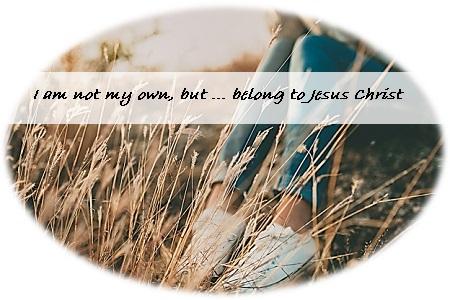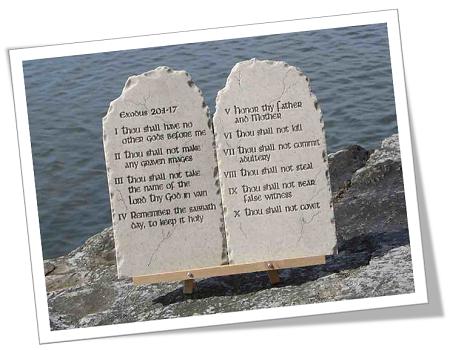The Theology of the Heidelberg Catechism
The Theology of the Heidelberg Catechism

By now, hasn’t everything that could be said about the Heidelberg Catechism already been said? From a historical perspective, we might still discover a few more details, but theologically? Hasn’t this document spoken for itself for 450 years already? In itself, that might be true. Nevertheless, it is surprising how little examination there has been of the Heidelberg Catechism’s distinctive theological structure. Such an examination would fill a need.
There is more. The Heidelberg Catechism, seen and properly understood in its historical and theological context, is clearly a dated document. For example, the extended treatment of the Lord’s Supper is typical for the theological landscape of its era, but in our time the theological agenda is quite different. There is no discussion concerning the position of Israel in the Catechism, and while it does confess God the Father as Creator, we can be sure that Ursinus and his contemporaries would not have heard of ‘sustainability’ (even though their way of living would have been ‘cleaner and greener’ than ours). In short, we experience a discernible distance, from a historical-spiritual perspective, between the Heidelberg Catechism and ourselves. This demands that we make the Catechism our own in a manner that fits our time and context.
Obviously, this article cannot provide an exhaustive treatment of the theology of the HC. We confine ourselves to developing two central points that typify the theology of the HC; (1) Theology that gives a sure footing to our faith; (2) Reformed theology. Actually we should also add (3) Trinitarian theology and (4) theology that opens the Scriptures, but the limited space does not permit us to do so.
1. Theology that gives sure footing to Our Faith⤒🔗
The theology of the Heidelberg Catechism can first of all be characterized as theology that provides a sure footing. This is my rendering of the word ‘comfort’, that so prominently stamps the first question and answer. In our culture, ‘comfort’ is largely associated with sorrow and mourning, as a counterweight to the harsh realities of life. Life was hard in the 16th century too: there were no painkillers, no antibiotics; there were pandemics of the plague, high infant mortality, extreme poverty and political instability. If the word ‘comfort’ would only have referred to such conditions, the Catechism would stand far from us, who live in a prosperous, politically stable welfare society, where high quality healthcare is available to all.
The Meaning of ‘Comfort’←↰⤒🔗
The word ‘comfort’ however, does not so much mean counterweight as ‘holdfast’, something to cling to with one’s whole being. It is firm ground under one’s feet in a chaotic and uncertain world, firm ground that allows one to look forward in hope. This meaning of ‘comfort’ is very close to the concept of ‘confidence’ (Q&A 21). Understood in this way, ‘comfort’ is not a distant idea at all. We might live in relatively prosperous circumstances, but a strong sense of confidence for the future is hard to find. Economic and environmental crises cause widespread pessimism about the future. In addition, our postmodern times have taught us just how precarious human knowledge can be, and Darwinist thinking would have us believe that we humans are really no more than highly evolved animals. Taken together, these developments do not leave us with much room for a hopeful perspective or a firm footing.
We would, however, misunderstand the Catechism if we understood ‘comfort’ in a purely spiritual sense. Of course, this comfort is fully spiritual, but it is not only spiritual. It is not just my soul that belongs to Jesus Christ; my body does also. Not only in death, at the limits of life, but also in the middle and the fullness of life, the only firm footing I have is that I belong to Jesus Christ. In other words, this ‘comfort’ encompasses all of life.

Here, the Catechism takes on an existential tone, one that you will not find quite like in Calvin’s Genevan Catechism or the Westminster (Shorter) Catechism. This existential approach is one of the most characteristic features of the Heidelberg Catechism. For here we are dealing with theology. The comfort it holds out is not a response to the universal human need for assurance.
In the words of K.H. Miskotte:
We never sought this comfort; it came to us. It is a work of God that we never asked for.
In other words, here the Catechism doesn’t bring some kind of generalization about the human condition, nor does it begin with a discussion of the properties of God. Rather, the firm ground for mankind that God is sets the tone for the Catechism’s first question and answer, and actually for everything that follows. God truly is our refuge (Psalm 46)!
This central statement opens up the whole Catechism for us, and hence its whole theology also. This comfort determines its whole structure. In this, the Heidelberg Catechism departs from the structure of most other catechisms: their order and structure might be quite deliberate, but it rarely happens that one perspective is overarching for the whole. By contrast, the Heidelberg Catechism does have such an overarching perspective. In the discipline, this is often referred to as the ‘analytic approach’.
After beginning with the confession of the ‘only comfort’, the Catechism proceeds to unfold this comfort. Q&A 2 describes the three things we need to know to ‘live in the joy of this comfort’. We should note well: to live in this comfort. The Catechism does not describe these three parts as some kind of path to find this comfort: not even the first part, where it describes our misery. On the contrary, especially at its transitional points, the Catechism brings us back to the confession of our only comfort, and of the three parts that give us the knowledge of this comfort. At the conclusion of its treatment of the Apostles’ Creed, the Catechism twice (Q&A 57 and 58) brings us back to our comfort. In the third part (Q&A 115), where the Catechism has completed its discussion of the law, the purpose of the preaching of the Ten Commandments is explained in terms of misery (‘that throughout our lives we may become more and more aware of our sinful nature’), deliverance (‘that we may seek more eagerly the forgiveness of sins and the righteousness of Christ’) and thankfulness (‘that we may never stop striving more and more to be renewed after God’s image’). Here again, the focus is on the ‘only comfort’.
The Idea of Ownership←↰⤒🔗
Still, in this overarching perspective lies a significant stumbling block: the idea of ownership. Does this confession ‘that I am not my own, but ... belong to Jesus Christ’ really give me, a 21st century person, a firm footing? It sounds terribly feudal, as if I were his serf or even his slave. If there is one idea that runs counter to our culture, a culture in which the greatest good is to be your own person, where your life does not follow a script that another has devised, it must be this idea of being someone else’s possession. You belong to yourself, and not to someone else: this is an inalienable right. Isn’t this idea of ownership a threat to our freedom? At this point, I’d like to stand up in defence of the Heidelberg Catechism. It’s true: intuitively the idea of ownership is quite foreign to us. At the same time, it lies so closely to the very core of the Gospel. This idea of ‘ownership’ gives us a valuable opportunity to critique contemporary attitudes to life. The emphasis on authentic self-actualization that we experience in our time brings with it a tremendous paradox. After all, our self-actualization demands that others acknowledge and recognize us. People want to be seen and noticed, on television, on social media, and if necessary in the church. We need ‘exposure’. But how authentic, really, is this need for continuous recognition? Who are you if no one pays attention to you, and what does that say about the authenticity of the self-image you have constructed?
All too often, people lose their sense of identity, and feel alienated. Who am I, really? The freedom to be who you are is ultimately self-defeating. After all, I need someone else to tell me who I am, preferably someone I can trust.

In this context, the only comfort, the firm foothold that the Heidelberg Catechism holds out, is truly liberating. In my deepest self, I am known and accepted by the living God! I am set free from the tyranny of the self, henceforth to live for God. And that truly is liberating. For to belong to Christ means that his Spirit comforts me, renews me to be his image, and always remains with me. The justification of the unrighteous has become the substance of my freedom. That, ultimately, is the core of the Gospel.
2. Reformed Theology←⤒🔗
The second characteristic feature of the theology of the Heidelberg Catechism is that it is Reformed. On the face of it, that is not at all surprising; in fact it seems quite predictable. Of course the HC is Reformed, imagine that it might not be! Still, it is worth considering what we mean by that, and in what specific ways this Reformed character becomes evident.
Covenant and Election←↰⤒🔗
In examining what is specifically Reformed about the Catechism, we note that two themes we would regard as typically Reformed are rarely mentioned at all, at least not explicitly: the covenant and election.
The covenant is explicitly referred to only once, in Q&A 74. Here, in connection with baptism, the Catechism argues for the baptism of children of believers. In what we would consider a crucial place to discuss the covenant, it is simply mentioned, and for the rest the HC doesn’t refer to the covenant at all.
Election is explicitly referred to in the confession concerning the church (a church, chosen to everlasting life, Q&A 54). Earlier, in connection with Christ’s return, the HC states that ‘He will take me and all his chosen ones into heavenly joy and glory’ (Q&A 52). In Q&A 20, it implicitly refers to election, where we read that not all men are saved, but ‘only those are saved who by a true faith are grafted into Christ’. The Catechism is also not unclear about the perseverance of the saints (Q&A 1, 21, 28).
While it is true that neither the covenant nor election receive much explicit attention, there can be no doubt that the position the HC takes is clearly Reformed. More importantly, both of these doctrines, especially the doctrine of election, are very much present in the background. After all, the essential function of the doctrine of predestination is to show that the work of God always precedes the actions of people. The doctrine of predestination already resonates in the central statement of Q&A 1, ‘that I am not my own, but belong ... to Jesus Christ’. The comfort of this election takes centre stage: Now that I am, I shall forever remain a living member of the church of God (Q&A 54). In the doctrine of election the theme of assurance has a prominent place.
Seen in this light, it is truly sad that in later years the doctrine of election led so often to uncertainly and doubt. And that as a reaction, so many Christians have sought their assurance in the strength of their own choice to believe – a strength that cannot endure to the end. Not my holding fast to God, but His holding fast to me, is ultimately my sure foothold. Here, the Heidelberg Catechism gives a thoroughly Reformed corrective to an unhealthy view of election on the one hand, and Arminian optimism on the other.
Law and Gospel←↰⤒🔗
There is another point at which the Heidelberg Catechism can be characterized as typically Reformed. This is in its view of the function of the Law in relation to the Gospel.
Often, the Lutheran view is portrayed as emphasizing the accusatory character of the Law, whereas the Reformed view would highlight its role as a rule of thankfulness in the lives of God’s children. While the distinction is not quite as sharp as that, there is enough truth in it to help to make things clearer.

It is typical of the Heidelberg Catechism that it does justice to the Law in its accusatory function, as well as its role as rule of thankfulness, without playing the one off against the other. In its discussion of the Ten Commandments, the chief accent clearly lies on the aspect of thankfulness; after all, it is placed in this section of the Catechism, and not, as Luther did, at the beginning. This choice of the HC is fully consistent with Calvin’s theology. In his Institutes, Calvin explicitly describes the role of the Law in our sanctification as its ‘principal use’ and ‘best instrument’ (2.7.12).
This does not mean, however, that the Catechism neglects the function of the Law as our accuser. Q&A 3 asks: ‘How do you know your misery?’ and answers: ‘From the Law of God’. We should note carefully that this does not refer to a past condition for believers. It doesn’t say ‘How did you know your misery?’ but ‘how do you know?’ It isn’t regarded as a something that comes before salvation, for it is treated as part of our only comfort. In this way, the Catechism provides a framework for the Law. As we consider the place of the Law, Q&A 4 is equally significant ‘What does God’s Law require of us?’ We might expect to be confronted with the Ten Commandments here. That would be consistent with Lutheran thinking: the Old Testament Decalogue, carved in stone, accusing and convicting us of sin. Instead, the answer says: ‘Christ teaches us this in a summary...’ The accusatory role of the Law cannot be separated from Christ or from the Gospel. From start to finish, they are inextricably connected. For the Law is the Law in the hand of Christ. In describing what the Law demands, the Catechism points not to the Old but to the New Testament. On the other hand, its description of the Gospel does not begin with the New Testament, but with the Old. After describing the necessary characteristics of a true Mediator, it asks:
From where do you know this? and it answers: From the Holy Gospel, which God Himself first revealed in Paradise ... proclaimed by the patriarchs and prophets, and foreshadowed by the sacrifices and other ceremonies of the Law. Q&A 19
The Gospel was already present in the Law – and this implies that there can be no opposition between the Law and the Gospel.
Both Law and Gospel are focused on Christ: what the Law demands, Christ teaches, and the Gospel has been fulfilled in Christ. The Gospel and the Law are not identical, but there is a very close connection between them. And this is where the Reformed emphasis on the covenant and its history is brought to the fore. Old and New Testament are not placed in opposition, Law on the one side and Gospel on the other. Instead, they are viewed together as two parts of one and the same history of the covenant.
This balanced treatment of Law and Gospel are a reflection of the irenic disposition of Ursinus, the student of Melanchton. He neither over-accentuates nor glosses over the points at issue; instead, with thorough and perceptive theology he does justice to the breadth of emphases found within the Protestant family. Not that the Lutherans were especially pleased with the result, for the position the Catechism takes is clearly and fully Reformed.
Faith and Justification←↰⤒🔗
The conception of faith, as set out in the Heidelberg Catechism, emphasizes a strong link between knowledge and confidence. These are two sides of the same coin: believing what you know, and knowing what you believe. The wording of Q&A 21 might suggest that these are two consecutive phases: first knowledge and then confidence. In that respect, the choice of words is not the most fortunate. Still, that is not the intention: at least, the treatment of these two aspects in the elaboration of the content of the Christian faith does not point in this direction: knowledge on the one hand versus confidence on the other. Nowhere does that Catechism suggest or assume that there needs first to be knowledge of an objective truth before the growth of confidence can follow. This unity of the two aspects already becomes apparent in Q&A 22, immediately following the definition of ‘true faith’. Christians must believe ‘all that is promised us in the Gospel, which the articles of the Christian faith teach us in a summary’. There is no separation here between head and heart, for head and heart are focused together on the promise of God. Here too, we believe what we know, and we know what we believe.

How does such faith help you? ‘In Christ I am righteous before God’ (Q&A 59). Quite rightly, Gerhard Goeters has rightly called this statement ‘the systematic heart of the Heidelberg Catechism’. Lines are brought together here: the line of sola fide: I am righteous before God only by a true faith; the line of sola gratia: Although my conscience accuses me that I have grievously sinned ... yet God, out of mere grace, imputes to me the merits of Christ; and therefore also the line of solo Christo: In Christ alone I am righteous before God. Sinner and justified at the same time: that is who I am, that is my identity. And just to be sure, Q&A 61 emphasizes that sola fide and sola gratia do not exclude but include each other: faith as such brings no merit, but it accepts grace as grace. Hence, it is already a gift of grace to be able to receive that grace. Consequently, the sanctification that proceeds from grace is not so much a matter of works as of fruits.
In Conclusion←⤒🔗
This brief overview of the theology of the Heidelberg Catechism shows that it is the existential approach of the Catechism that makes it so valuable in our present-day context. The Reformed doctrine and spirituality that are so characteristic of the Heidelberg Catechism are not just of historical interest: theologically they are as relevant as ever. Even when we (rightly!) take account of its historical distance from us, there are still plenty of good things to be learned from the old ‘Heidelberger’!

Add new comment